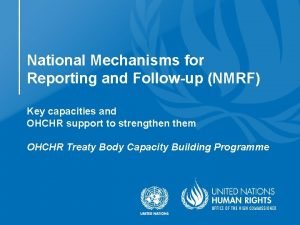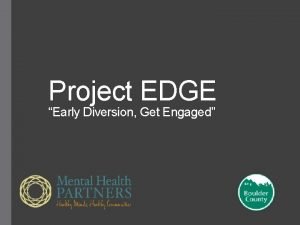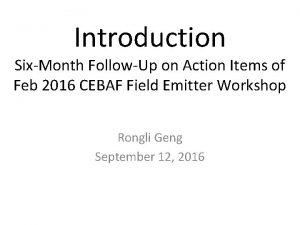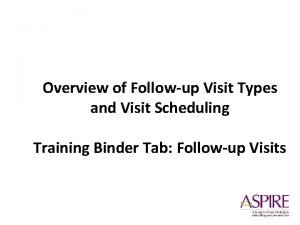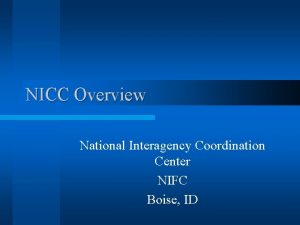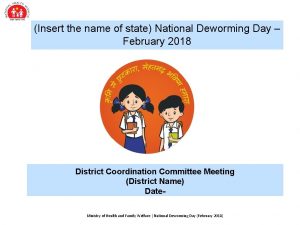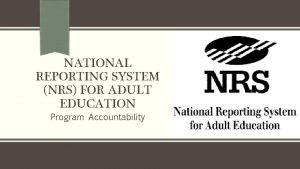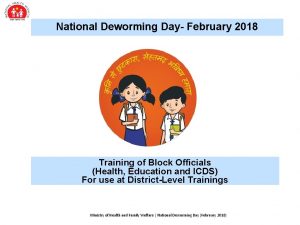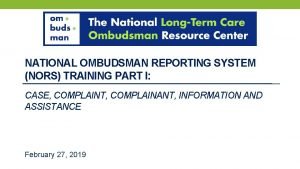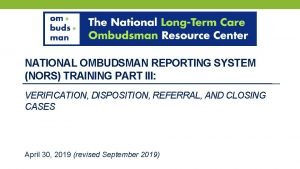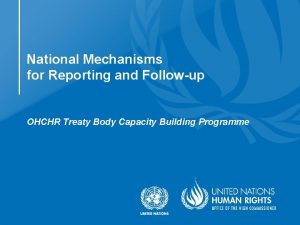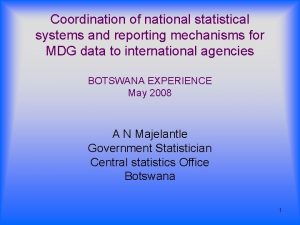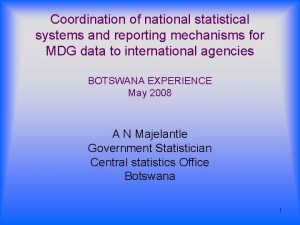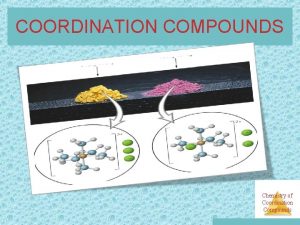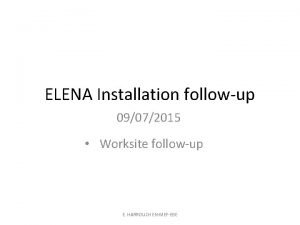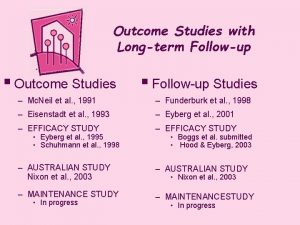National Mechanisms for Reporting and Followup Coordination and
















- Slides: 16

National Mechanisms for Reporting and Follow-up Coordination and Consultation Capacities OHCHR Treaty Body Capacity Building Programme

Role of different stakeholders § Ministries (including SDG focal points & National Statistics Office) § Parliament § Judiciary NMRF & Coordination § NHRIs NMRF & Consultation § NGOs

Coordination Capacity of a NMRF

NMRFs & Coordination capacity The capacity and authority to disseminate information, and to organize and coordinate information gathering and data collection from government entities, but also other State actors such as the national office for statistics, SDG implementation focal point “agency/Ministry”, parliament and the judiciary, for reporting and follow-up to recommendations This may include - a solid mandate, terms of reference, and annual work plans engaging all relevant Ministries, the National Statistics Office and SDG focal point (lead agency/ Ministry) - Email lists and regular coordination meetings - Use of templates for collecting information - Standing procedures for coordination with Parliament

Coordination with Government entities Ø Draw up a calendar and hold regular coordination meetings (NMRF members and/or Ministry focal points) Ø Establish a mailing list and regularly share info Ø Ensure de-briefings by the head of delegation after reviews by UPR and Treaty Bodies including on the recommendations received Ø For an upcoming report (1) hold a preparatory NMRF meeting to explain how the relevant human rights mechanism works and outline the structure and content of the upcoming report; and (2) send a template/table to NMRF members and focal points listing previous recommendations with responsible line Ministries, with a request for information and/or draft input of the periodic report, including word limits and submission deadlines

Importance of National Statistics Offices and SDG implementation focal points National Statistics Offices (NSOs) § NSOs play an important role in providing socioeconomic and administrative statistics (including administrative records, census data, statistical and opinion surveys, etc). SDG implementation focal points § OHCHR’s key priority is to ensure the SDGs are implemented in a manner consistent with international human rights standards § Building synergies between HR and SDG reporting will improve follow-up and reduce States’ reporting burdens § HRM recommendations help to identify key issues and provide guidance for SDG implementation

Role of Parliament as a guardian of human rights § Parliamentary activity (ratifying treaties, legislating, adopting the budget and overseeing the executive branch) covers the entire spectrum of political, civil, economic, social and cultural rights § Parliament can use recommendations of the international human rights system to scrutinize the compliance of the executive with the human rights obligations of the State § Parliamentary human rights bodies can assess the conformity of bills or legislation with human rights obligations § Parliament is a guardian of human rights

Coordination of NMRF with Parliament § NMRF structure could include representatives of Parliament or individual members of Parliament participate in NMRF meetings (in some cases upon invitation) § NMRF could establish a standing process to interact with Parliament (informing Parliament on reporting/ review process, submitting draft reports for comments, forwarding recommendations, and liaising between Parliament and special procedure mandate holders) Example (South Africa): § All draft reports submitted under international human rights treaties are debated in Parliament; § Parliamentarians are included in national delegations to the Treaty Bodies to ensure they fully understand the Treaty Bodies‘ recommendations.

Role of the Judiciary regarding international human rights law § Resolves disputes § Administers justice § Interprets domestic legislation in accordance with, inter alia, the obligations of the State under international law § Judicial review (overseeing executive and legislative branches, may lead it to invalidate laws and decisions)

Coordination of NMRF with the Judiciary NMRF could engage through Ministry of Justice to: § collect information on human rights related cases from the courts (e. g. Mauritius, Mexico, Morocco) § transmit recommendations from human rights mechanisms to various levels of the judiciary (e. g. Mauritius, Mexico, Morocco Senegal). Ministry of Justice is normally part of Governmental delegation at TB/ UPR reviews

Consultation Capacity of a NMRF

NMRFs & Consultation capacity The capacity to foster and lead consultations with the country’s NHRI(s) and civil society This may include: - A dedicated focal point for liaising with other stakeholders - Establishing a mailing list - Regular consultations with different stakeholders - Participation of stakeholders in selected meetings (observer)

Consultation with the NHRI § Governments may consult with NHRIs in the preparation of a State’s reports to human rights mechanisms (e. g. share draft report for comments) § NMRF could include NHRI representatives in its structure, working groups, and in plenary meetings (without voting rights in order to preserve their independence in line with the Paris Principles)

Consultation with NGOs Ø Establish a NGO contact network and mailing list Ø Invite NGOs to participate in national consultations prior to the drafting of periodic (TB) and national (UPR) reports Ø Invite civil society to participate periodically in selected NMRF plenary or focal point meetings Ø Hold subject-specific meetings with civil society (including in response to requests from civil society groups) Ø Circulate the minutes of NMRF plenary meetings and/or NMRF meetings with civil society among the civil society network

Recommendations of TBs on consultation with NGOs CEDAW (Turkey, 2010) The Committee notes with appreciation that the report was prepared in a participatory process involving Government bodies and non-governmental organizations. CEDAW (Republic of Korea, 2011) The Committee requests the State party to ensure the wide participation of all ministries and public bodies in the preparation of its next report, and to consult a variety of women’s and human rights organizations during that phase.

Reporting cycle with stakeholders
 National mechanisms for reporting and follow-up
National mechanisms for reporting and follow-up Followup edge
Followup edge Followup:actionitems
Followup:actionitems Follow up visit
Follow up visit M(aa)3 isomers
M(aa)3 isomers National interagency coordination center
National interagency coordination center National deworming day
National deworming day Ndd reporting format 2021
Ndd reporting format 2021 National reporting system
National reporting system Deworming poster images
Deworming poster images National ombudsman reporting system
National ombudsman reporting system National ombudsman reporting system
National ombudsman reporting system Kontinuitetshantering
Kontinuitetshantering Typiska drag för en novell
Typiska drag för en novell Nationell inriktning för artificiell intelligens
Nationell inriktning för artificiell intelligens Ekologiskt fotavtryck
Ekologiskt fotavtryck Varför kallas perioden 1918-1939 för mellankrigstiden
Varför kallas perioden 1918-1939 för mellankrigstiden
